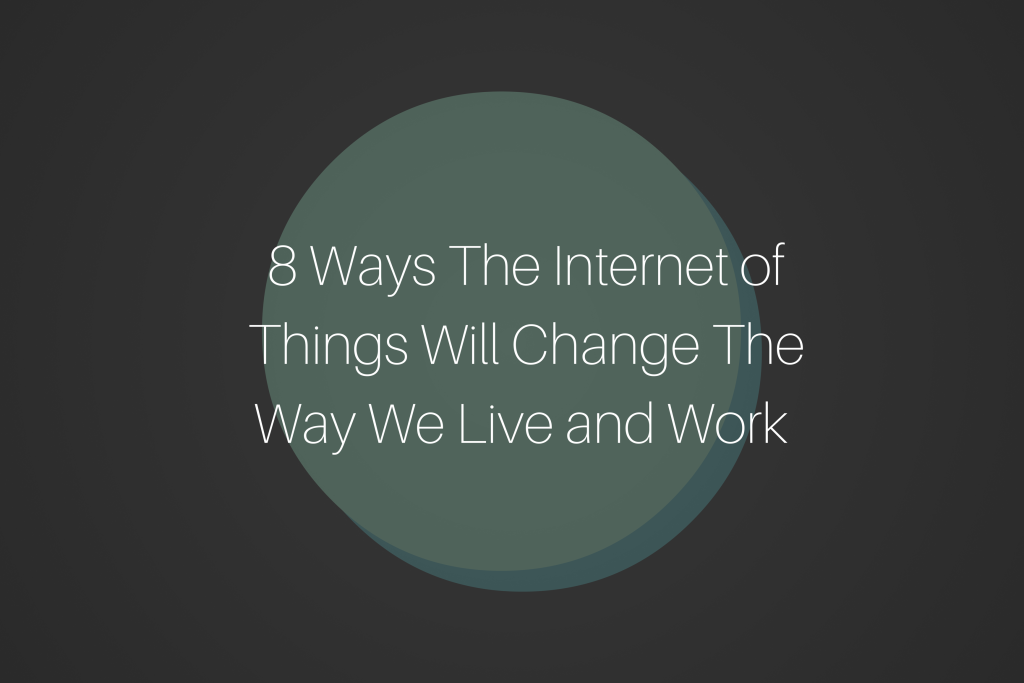8 Ways the Internet of Things Will Change The Way We Live And Work
By 2020, there will be tens of billions of data-spouting devices connected to the Internet. And they’re already changing how we live and work.
IBM’s Almaden lab is sacred ground for techies. Set in the middle of 700 grassy acres on a hill south of San Jose, its scientists have filed thousands of patents. They’ve won Turing and Nobel prizes. And almost 60 years ago, they pioneered the first bulky disk drive. Since then, they’ve been involved in successive pushes to miniaturize it and miniaturize it again, so that now even the tiniest of devices can gather and store data.
Today, Big Blue is putting that tiny technology to work, developing a multi-application gas sensor that could help airports detect and track biochemical threats, determine whether the steak in your fridge has spoiled, or even diagnose breast cancer and other diseases simply by analyzing your breath.
Sensors like these are driving a relatively new tech trend: the Internet of Things. In essence, the “things” referenced in this awkward buzz-phrase are machines embedded with sensors that gather, store and analyze data. And since they’re all linked to the Internet, they can upload that data for further processing, download updated software and often be controlled from afar.
The international research firm Gartner estimates that by the end of last year, there were 3.8 billion connected things out there—smart cars, smoke detectors, door locks, industrial robots, streetlights, heart monitors, trains, wind turbines, even tennis racquets and toasters. By 2020, Gartner estimates there will be 25 billion of these smart devices, transmitting tiny amounts of data to us, to the cloud and to each other. Cisco’s outgoing CEO, John Chambers, has boldly proclaimed that there will be 50 billion devices online within five years, with a total market worth $19 trillion (all currency in U.S. dollars). Another leader in this sphere, Siemens, has said these smart things are starting to power a fourth Industrial Revolution (after steam, electricity and wired computers).
Some of this, of course, is hot air. There’s always a certain amount of hype that accompanies the latest tech trend. Remember radio-frequency ID tags? They were going to change the world, too.
And so, yes, there are technological obstacles between us and this Brave New World.
First off, there’s the language barrier. Smart home devices—one of the more developed realms within the Internet of Things—currently speak a Babel of wireless languages, depending on the manufacturer. Your home’s thermostat and HVAC system might communicate in Bluetooth, the fridge and coffeemaker in ZigBee, the locks and blinds in Z-Wave and the smoke detector in WiFi. Plus, making sense of the data produced by these machines—not to mention finding space to store giga-, tera-, exa- and even zettabytes of it—poses a huge challenge. Security is another ongoing concern. One IT expert recently demonstrated how easily he could hack into a radio-frequency-controlled insulin pump and remotely administer lethal doses to a diabetic. Other experts have claimed that hackers might, if motivated, access the software in smart cars to take control of their speed, brakes and steering.
But the tech challenges, as daunting as they are, worry insiders less than the legal, social and regulatory ones. Because these sensor-embedded machines will dramatically increase what we can find out about one another, they could give rise to so-called Big Brother and Little Brother problems.
First off, who owns all this data, anyway? Does the deeply personal information collected by your fitness tracker belong to you or to the manufacturer? Should law enforcement be able to access vehicle data in a criminal investigation? Will car-owners want their cars to alert authorities and insurers automatically after every fender-bender? New Cisco-made sensors can, when worn by miners, detect the presence of life-threatening gases. Others can sense if workers (say, in the oil fields or on mega-construction sites) are moving or still—perhaps injured. But they can also help employers determine precisely how and where their employees spend every working moment.
Even with such thorny problems looming, these intelligent machines are already altering spheres as diverse as health care and manufacturing, city planning, transportation and power generation, agriculture and household management. The devices themselves might be micro, but they’re causing macro shifts in how we live and work.
By: Alec Scott
Read at: http://www.theglobeandmail.com/report-on-business/rob-magazine/the-future-is-smart/article24586994/


